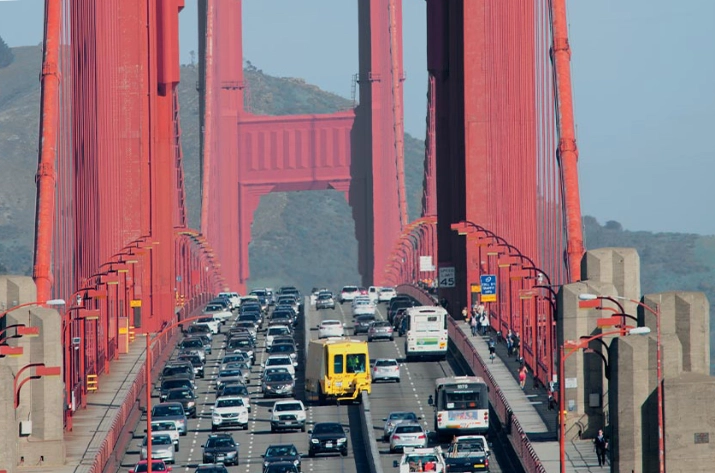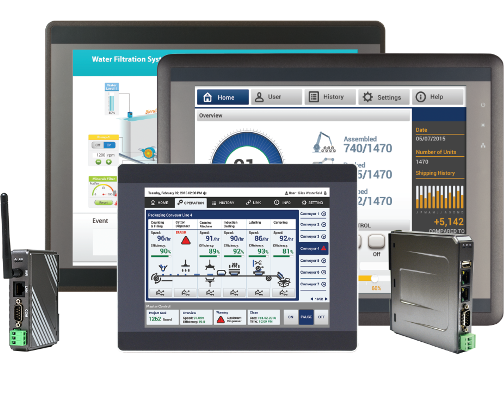Road Zipper Upgrades
After the Golden Gate Bridge project, it was discovered that the
current controller hardware was soon to become obsolete. The Road
Zipper itself had been around since the 1980’s, meaning it was due
for enhancements. LTS saw this as an opportunity to upgrade the Road
Zipper’s control system to ensure it would run on future-supportable
hardware, and provide new, additional real-time data displays. Enter
a Maple Systems high-speed, high-resolution
HMI. A 15” touch screen
unit with Ethernet, 2 Serial ports, 2 USB ports and a VNC Server
which allows for remote monitoring.
The upgrade project for the Road Zipper was led by Dave Blankenship,
Senior Electrical Designer at LTS:
“When I first came to work for LTS, I reviewed their current control
system and was surprised to discover that some of the currently used
PLC hardware components were going obsolete. A closer look also
revealed that the PC and view monitors in use were running a single
page display-only screen using legacy Visual Basic code. I
approached the Applications Engineers at Maple Systems with my idea
of replacing the current control system with an HMI and PLC
(ControlLogix) combination. One that would not only function as
needed, but provide a multi-page touchscreen display with enhanced
features, including custom screens with push buttons, machine status
indications, custom faceplates for multiple operational modes, etc."
Blankenship went on to say:
"The Maple Systems HMI does a beautiful job showcasing all the
improvements LTS required and really makes it pop. And, despite all
the work that's been done using a remote cellular modem, CANbus
gateway, remote I/O, and PLC program, the central focus is still on
the HMI" - Dave Blankenship, Senior Electrical Designer Lindsay
Transportation Services
In addition, LTS appreciated the ease of use in integrating Maple’s
HMI seamlessly into the Road Zipper. From their standpoint, the
addition of this controller added value to the Road Zipper with
increased visibility, intuitiveness, and supportability (compatible
hardware). A few other noteworthy features LTS utilized on the unit
they chose include the USB feature, which allowed for recipe
uploads, and the touch screen. Engineers at LTS also applauded the
following Maple features: Alarm Notifications; VNC Server; Free Tech
Support; and Easy-to-Use Software.
When asked how Maple Systems compares to other brands in the HMI
market, Dave said that he has personally worked with many other,
well-known brands in the industry, but he has concluded that Maple
Systems' value is unmatched. Dave stated that the price,
functionality, value, and support were all aspects of a service that
“is a pleasure to work with” and simply cannot be compared to other
HMIs in the market today. Maple Systems is proud to have been, and
to continue to be, LTS’s ideal solution for such a complex upgrade.
The most recent recipient utilizing Maple Systems HMIs is the Walt
Whitman Bridge connecting Philadelphia to New Jersey, hosting two
newly upgraded Road Zippers in 2016. It is an honor for Maple
Systems to be part of history with this partnership in creating
safer roadways across the world, from New Jersey to New Zealand!



